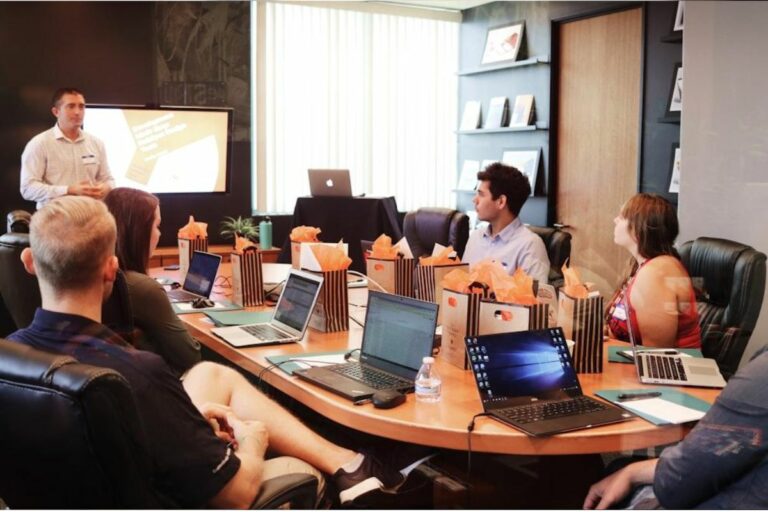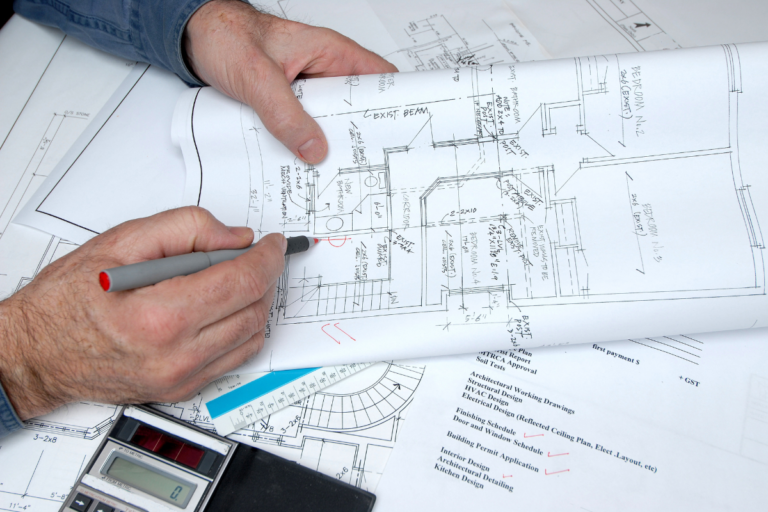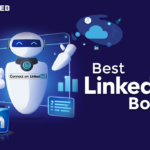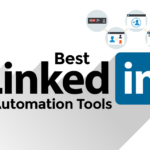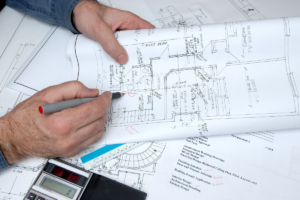How to connect with someone on LinkedIn?
If you’re looking to expand your professional network, LinkedIn is the perfect platform to connect with like-minded individuals.
With over 700 million users worldwide, LinkedIn offers a vast pool of potential connections in your industry.
However, making meaningful connections on LinkedIn can be a daunting task, especially if you’re new to the platform.
In this article, we’ll walk you through some effective ways to connect with someone on LinkedIn and grow your professional network.
One of the easiest ways to connect with someone on LinkedIn is by searching for them using the platform’s search bar.
Once you find the person you want to connect with, you can send them a connection request by clicking on the “Connect” button on their profile.
However, it’s essential to personalize your connection request by adding a brief message that explains why you want to connect with them.
This will help you stand out from the crowd and increase your chances of getting accepted.
Another way to connect with someone on LinkedIn is by joining groups related to your industry or interests.
LinkedIn groups are an excellent way to meet new people and engage in meaningful discussions.
By actively participating in group discussions, you can establish yourself as a thought leader in your industry and attract potential connections.
You can also send connection requests to other group members who share your interests or work in your industry.
Post Contents
Understanding LinkedIn and Its Purpose
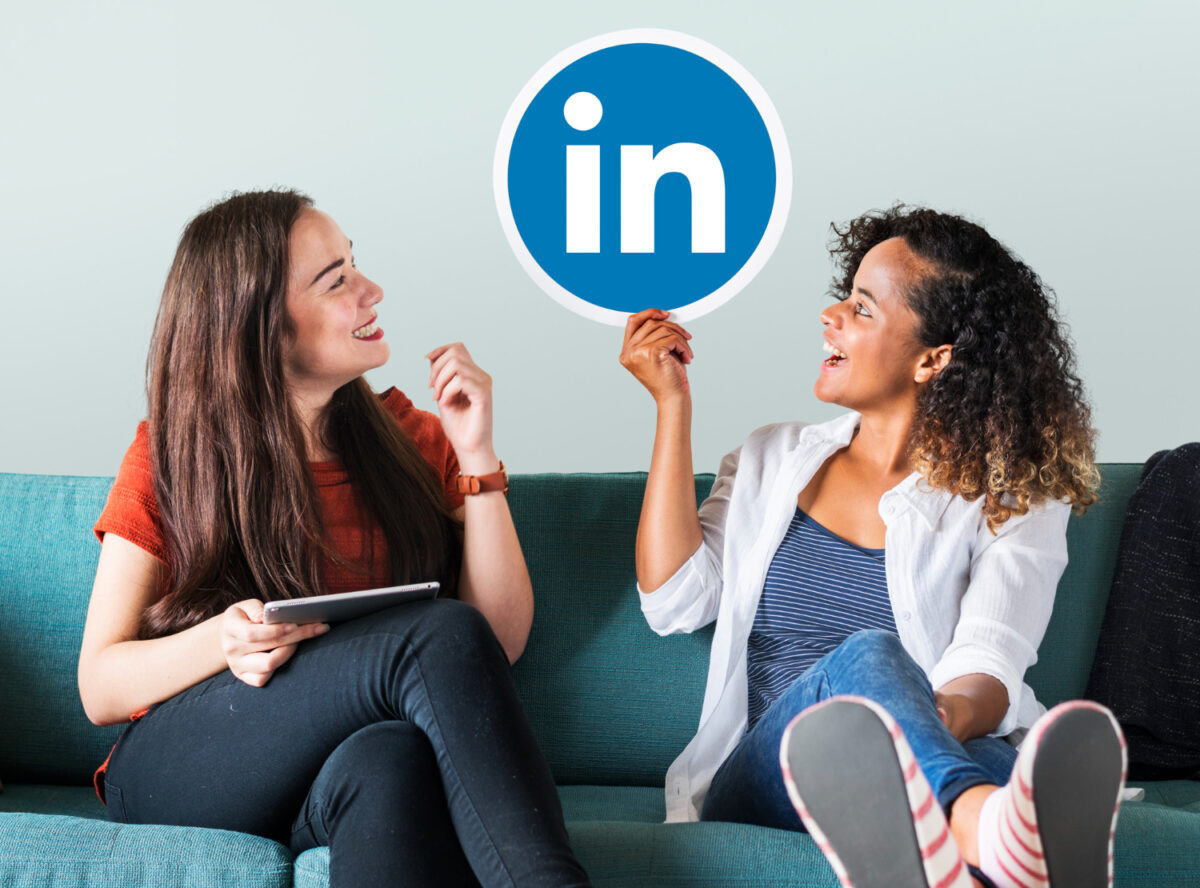
If you’re looking to expand your professional network, LinkedIn is the perfect platform for you.
LinkedIn is a social media site designed specifically for professionals to connect, share ideas, and find opportunities.
It’s like a digital resume that allows you to showcase your skills, experience, and education to potential employers and colleagues.
LinkedIn is a professional network that can help you build your personal brand and expand your professional reach.
With over 700 million users worldwide, LinkedIn is a powerful tool for networking and job searching.
The platform is designed to help you connect with people in your industry, find job openings, and share content related to your field.
Some of the key features of LinkedIn include:
- Profile: Your LinkedIn profile is like your digital resume. It should include your work experience, education, skills, and any other relevant information that can help you stand out to potential employers or clients.
- Connections: On LinkedIn, you can connect with people you know professionally, such as colleagues, classmates, or clients. You can also connect with people you don’t know but who work in your industry or have similar interests.
- Groups: LinkedIn groups are communities of professionals who share similar interests or work in the same industry. Joining groups can help you expand your network and stay up-to-date on industry news and trends.
- Job Search: LinkedIn is a great platform for job searching. You can search for job openings, apply for positions, and even get recommendations from people in your network.
- Content: LinkedIn allows you to share content related to your industry, such as articles, blog posts, or videos. Sharing content can help you establish yourself as a thought leader in your field and attract potential clients or employers.
Overall, LinkedIn is a valuable tool for anyone looking to expand their professional network and advance their career. By understanding the purpose of LinkedIn and how to use its features effectively, you can build your personal brand, connect with other professionals, and find new opportunities in your field.
Setting Up Your LinkedIn Profile

Crafting a strong LinkedIn profile is an important first step when it comes to connecting with others on the platform.
Here are a few tips on how to set up your profile to make the best impression:
Crafting Your LinkedIn Headline
Your LinkedIn headline is the first thing people see when they come across your profile.
It’s important to make it count. Your headline should be a brief summary of your professional experience, skills, and goals.
Keep it concise and use keywords relevant to your industry.
For example, instead of simply stating “Marketing Professional,” try something like “Experienced Marketing Professional with Expertise in Social Media and Content Strategy.”
This will help you stand out and make it clear what you have to offer.
Presenting Your Professional Goals
Your LinkedIn profile should also clearly communicate your professional goals.
This can be done in your summary section, where you can provide a brief overview of your career and what you hope to achieve.
Use this space to highlight your strengths and accomplishments, and explain how you can contribute to a potential employer or partner.
Highlighting Your Education and Career
Your education and career history are also important components of your LinkedIn profile.
Make sure to include your current and past positions, along with a brief description of your responsibilities and achievements.
Use bullet points to keep things organized and easy to read.
Don’t forget to also highlight your education, including any relevant certifications or degrees you’ve earned.
This can help demonstrate your expertise and qualifications to potential connections.
By following these tips, you can create a strong LinkedIn profile that will help you connect with others in your industry and achieve your professional goals.
How to Connect with Someone on LinkedIn

Connecting with someone on LinkedIn is a great way to expand your professional network and create valuable relationships.
Here are some tips on how to connect with someone on LinkedIn.
Importance of Networking on LinkedIn
Networking is an important part of building a successful career, and LinkedIn is one of the best places to do it.
By connecting with others in your industry, you can learn about new job opportunities, get advice on career development, and stay up-to-date on industry news and trends.
Using ‘My Network’ Feature
The ‘My Network’ feature on LinkedIn is a great way to find and connect with people who may be interested in your work.
You can use this feature to search for people based on their job title, industry, location, and more.
Once you find someone you want to connect with, you can send them a personalized message to introduce yourself and explain why you want to connect.
Joining LinkedIn Groups
Joining LinkedIn groups is another great way to expand your network and connect with like-minded professionals.
You can join groups based on your industry, interests, or location, and participate in discussions and events to meet new people.
When you connect with someone in a group, be sure to personalize your message and explain why you want to connect.
Utilizing Shared and Mutual Connections
Shared and mutual connections can be a valuable resource when it comes to networking on LinkedIn.
When you find someone you want to connect with, look at their profile to see if you have any shared connections.
If you do, you can ask your mutual connection to introduce you or provide a referral.
This can help you establish a connection with the person you want to connect with and make a more meaningful connection.
By following these tips, you can build a strong professional network on LinkedIn and connect with people who can help you achieve your career goals.
Remember to be friendly, professional, and genuine in your interactions, and always personalize your messages to make a lasting impression.
Connecting with Others

When it comes to connecting with others on LinkedIn, there are several ways to go about it.
In this section, we’ll explore some of the most effective methods for making meaningful connections.
Sending Connection Requests
One of the most straightforward ways to connect with someone on LinkedIn is to send them a connection request.
To do this, simply navigate to the person’s profile and click the “Connect” button.
You can also send a connection request from a search results page by clicking “Connect” to the right of the person’s name.
When sending a connection request, it’s important to personalize your message and explain why you want to connect.
This can help increase the likelihood that the person will accept your request.
Reaching Out via InMail
If you don’t have a direct connection with someone on LinkedIn, you can still reach out to them via InMail.
InMail is LinkedIn’s messaging system that allows you to send messages to people you’re not connected with.
To use InMail, you’ll need a Premium LinkedIn account.
Once you have access, you can navigate to the person’s profile and click the “Message” button to send them a message.
Adding Personal Notes to Invitations
When sending a connection request, it’s always a good idea to add a personal note to the invitation.
This can help make your request more memorable and increase the likelihood that the person will accept.
To add a personal note to an invitation, simply click the “Connect” button on the person’s profile and select “Add a note” from the dropdown menu.
Then, type in your message and click “Send invitation.”
Following Thought Leaders and Influencers
Another great way to make connections on LinkedIn is to follow thought leaders and influencers in your industry.
This can help you stay up-to-date on the latest trends and connect with other professionals who share your interests.
To follow someone on LinkedIn, simply navigate to their profile and click the “Follow” button.
You can also follow thought leaders and influencers by searching for them using the LinkedIn search bar.
Overall, there are many ways to connect with others on LinkedIn.
By following these tips and best practices, you can build a strong network of connections and advance your career in meaningful ways.
Engaging with Content
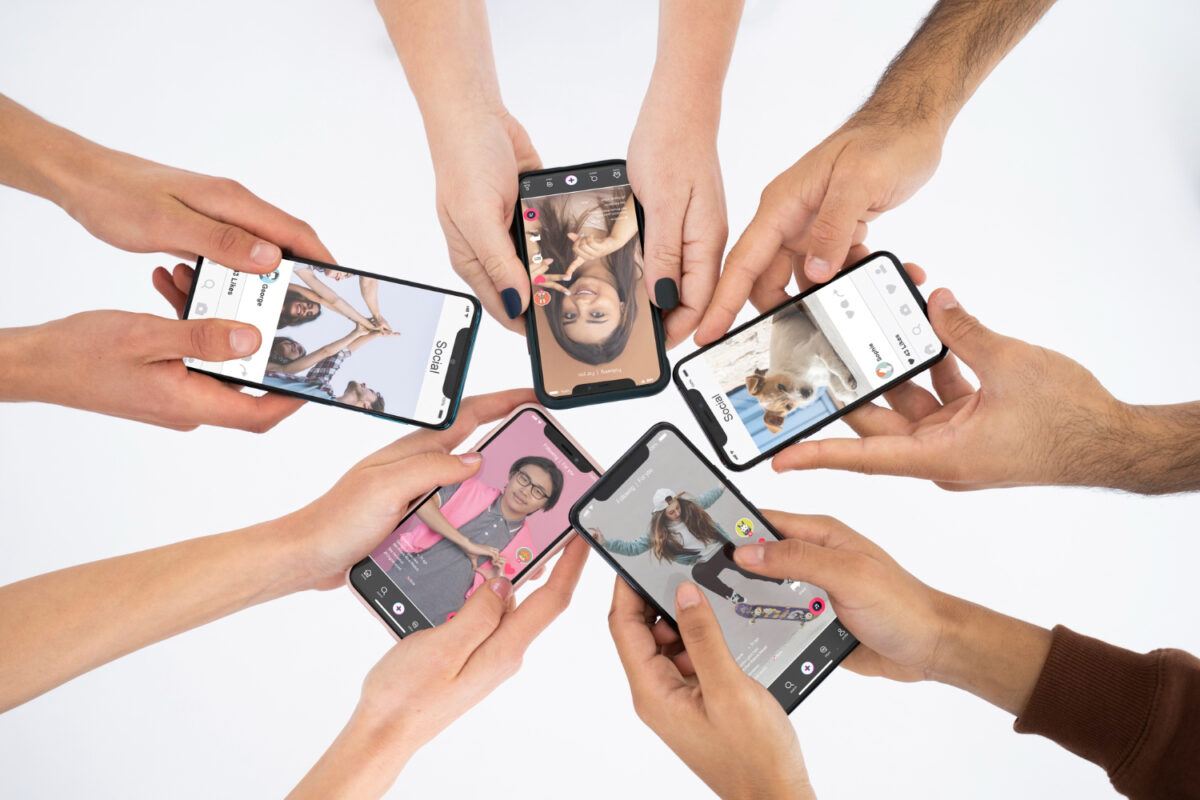
Engaging with content on LinkedIn is a great way to connect with others and build your network.
There are several ways to engage with content, including commenting on posts, sharing and writing articles, and following trends and industry updates.
Commenting on Posts
Commenting on posts is a great way to start a conversation and show your interest in a particular topic.
When commenting, make sure to keep your tone friendly and respectful.
Also, try to add value to the conversation by sharing your thoughts or insights.
Here are some tips for commenting on posts:
- Keep your comments concise and to the point
- Use emojis to add personality and express emotions
- Tag the author or other relevant people to get their attention
- Ask questions to encourage further discussion
Sharing and Writing Articles
Sharing and writing articles can help you establish yourself as a thought leader in your industry.
When sharing articles, make sure to add your own commentary or insights to show your expertise.
When writing articles, make sure to choose topics that are relevant to your target audience and provide value.
Here are some tips for sharing and writing articles:
- Use catchy headlines to grab attention
- Include images or videos to make your content more engaging
- Use bullet points or tables to make your content easier to read
- Add a call to action to encourage engagement
Following Trends and Industry Updates
Following trends and industry updates can help you stay informed and up-to-date with the latest news and developments in your industry.
When following trends, make sure to share your thoughts or insights to show your expertise and contribute to the conversation.
Here are some tips for following trends and industry updates:
- Use hashtags to find relevant content
- Follow influencers or thought leaders in your industry
- Join groups or communities related to your industry
- Share your thoughts or insights to show your expertise
Engaging with content on LinkedIn is a great way to connect with others and build your network.
By commenting on posts, sharing and writing articles, and following trends and industry updates, you can establish yourself as a thought leader and build valuable connections.
Leveraging LinkedIn for Job Opportunities

If you’re job hunting, LinkedIn can be a valuable tool for finding job opportunities and connecting with recruiters.
Here are some tips for leveraging LinkedIn to help you land your next job.
Connecting with Recruiters
Connecting with recruiters on LinkedIn is a great way to get your foot in the door with potential employers.
To find recruiters in your field, use the search bar at the top of your LinkedIn homepage.
Type in the name of your industry and select “People” from the drop-down menu.
Then, filter your search results by selecting “Recruiter” under “All Filters.”
When you find a recruiter you want to connect with, send them a personalized message introducing yourself and expressing your interest in their company.
Be sure to highlight your relevant skills and experience.
If the recruiter accepts your connection request, continue to engage with them by liking and commenting on their posts.
Using LinkedIn for Job Search
LinkedIn’s job search feature allows you to search for job opportunities based on keywords, location, and other filters.
To access the job search feature, click on the “Jobs” tab at the top of your LinkedIn homepage.
When you find a job you’re interested in, read the job description carefully to ensure you meet the qualifications.
Then, tailor your resume and cover letter to the job posting.
You can also use LinkedIn to research the company and the hiring manager.
Expanding Your Network for Job Opportunities
Expanding your network on LinkedIn can increase your chances of finding job opportunities.
Start by connecting with people you know, such as former colleagues and classmates.
You can also join LinkedIn groups related to your industry and participate in discussions.
When you connect with someone new, send them a personalized message introducing yourself and expressing your interest in connecting.
Be sure to highlight your relevant skills and experience.
You can also use LinkedIn’s “People Also Viewed” feature to find other professionals in your field.
By following these tips, you can use LinkedIn to help you find job opportunities and connect with recruiters.
Remember to keep your profile up-to-date and engage with your network regularly to stay visible.
Best Practices for LinkedIn Networking
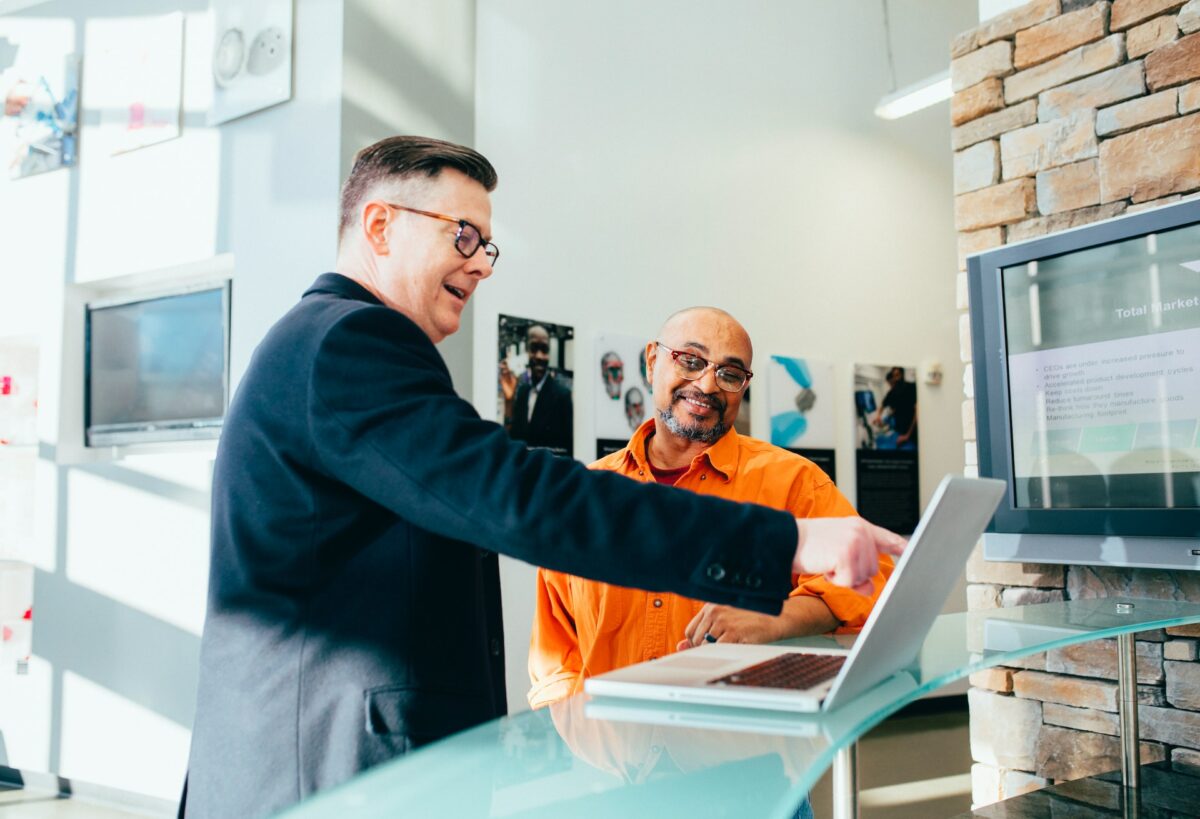
Connecting with people on LinkedIn can be a great way to expand your professional network and find new opportunities.
However, it’s important to approach LinkedIn networking in a professional and thoughtful way.
Here are some best practices to keep in mind:
Maintaining Professionalism
When reaching out to someone on LinkedIn, it’s important to maintain a professional tone.
Avoid using slang or overly casual language, and make sure to proofread your message for any errors.
Additionally, make sure that your LinkedIn profile is up-to-date and presents you in a professional light.
Personalizing Your Outreach
When sending a connection request or message on LinkedIn, take the time to personalize it.
Mention how you found the person’s profile or why you’re interested in connecting with them.
If you have any shared connections or interests, be sure to mention those as well.
Personalizing your outreach can help you stand out and make a stronger connection.
Following Up on Connections
Once you’ve connected with someone on LinkedIn, it’s important to follow up and maintain the relationship.
Consider sending a message to thank them for connecting, or sharing an article or resource that you think they might find interesting.
Additionally, make sure to keep your LinkedIn profile up-to-date and engage with your connections by liking or commenting on their posts.
Overall, LinkedIn can be a powerful tool for networking and building professional relationships.
By following these best practices and approaching LinkedIn networking in a thoughtful and professional way, you can make meaningful connections and find new opportunities.
Frequently Asked Questions
Dealing with Connection Requests
When you receive a connection request on LinkedIn, it’s important to handle it appropriately.
Here are some common questions and answers to help you:
What should I do if I receive a connection request from someone I don’t know?
It’s up to you whether or not to accept the request. If you’re unsure, you can send the person a message asking how you know each other or why they want to connect. If you don’t feel comfortable connecting, you can simply ignore the request.
What if I receive too many connection requests? You can adjust your settings to only receive requests from people you know or to limit the number of requests you receive.
How do I know if someone has accepted my connection request? You’ll receive a notification when someone accepts your request.
Using LinkedIn on Mobile and Browser
LinkedIn can be accessed through both the mobile app and a browser.
Here are some common questions and answers to help you:
Can I use LinkedIn on my mobile device?
Yes, LinkedIn has a mobile app that can be downloaded from the app store. The app allows you to access your profile, search for jobs, and connect with other users.
Can I use LinkedIn on my computer?
Yes, LinkedIn can be accessed through a browser on your computer. Simply go to the LinkedIn website and log in to your account.
Is there a difference between using LinkedIn on mobile and on a computer? The functionality of LinkedIn is generally the same on both mobile and computer. However, the layout and user interface may be slightly different.
Understanding First, Second, and Third-Degree Connections
LinkedIn uses a connection hierarchy to show how users are connected to each other.
Here are some common questions and answers to help you:
What is a first-degree connection? A first-degree connection is someone you are directly connected to on LinkedIn. You can see their full profile and message them directly.
What is a second-degree connection? A second-degree connection is someone who is connected to one of your first-degree connections. You can see their name and profile picture, but not their full profile.
What is a third-degree connection? A third-degree connection is someone who is connected to one of your second-degree connections. You can see their name, but not their profile picture or full profile.
Key Takeaways
Connecting with people on LinkedIn can be a great way to expand your professional network and find new opportunities.
Here are some key takeaways to keep in mind when reaching out to someone on LinkedIn:
- Customize your invitation: When sending a connection request, take the time to personalize your message and explain why you want to connect. This can help you stand out from other requests and increase the likelihood of a positive response.
- Be professional: Remember that LinkedIn is a professional networking site, so keep your messages and interactions polite and respectful. Avoid using slang, emojis, or other informal language that may be inappropriate in a professional context.
- Don’t be too pushy: While it’s important to follow up and stay in touch with your connections, it’s also important to respect their time and boundaries. Avoid bombarding them with messages or requests, and be patient if they don’t respond right away.
- Build relationships: Connecting with someone on LinkedIn is just the first step. To truly get the most out of your network, focus on building long-term relationships with your connections. This can involve sharing relevant content, offering to help them with their own goals, or simply staying in touch and keeping them updated on your own career progress.
By following these tips and focusing on building genuine relationships with your connections, you can make the most of your LinkedIn network and find new opportunities to advance your career.


